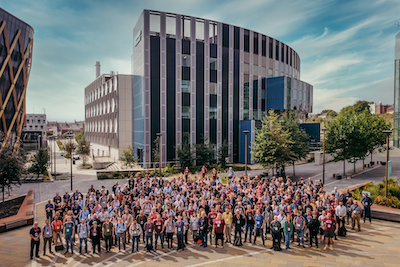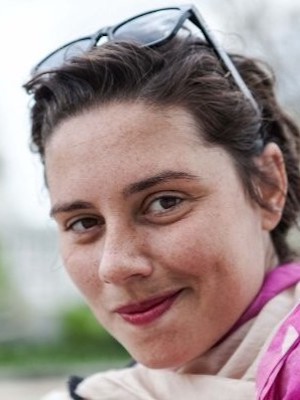Human-centred design at RSECon22
Posted on 6 January 2023
Human-centred design at RSECon22
 RSECon22 group photo
RSECon22 group photoBy SSI Fellow, Meag Doherty
This is the first of four blog posts related to the topic of Human-centred design.
The RSECon 22, the Sixth Annual Conference for Research Software Engineering took place on 6-8 September 2022 in the Frederick Douglass Centre at Newcastle University.
RSECon22 was an international gathering of people who design, build, test, and innovate software used for research purposes.
My motivation for attending RSECon22 this year was to pursue one of my Software Sustainability Institute (SSI) Fellowship goals: to raise the profile of human-centred design — a way of working that centres user needs throughout a project— in research software development.
Given that RSECon is one of the preeminent gatherings of research software engineers (RSEs) and allies in the UK, I assumed this would be THE place to find people who, like me, are not engineers but provide essential strategy and design directions for research software. I wanted to meet RSE leaders responsible for the user experience of research software and find out what barriers they face and their goals.
And finally, I wanted to probe into a question: if RSEs are a growing discipline —where is its natural partner— the Research Software Designer (RSD)? (SSI Fellow Ginestra Ferraro is the only RSD I’ve met!)
Suppose I find a critical mass of people working on improving the user experience of research software (RSDs or under another name). Would there be interest and need to develop a Community of Practice?
Lesson learned: Human-centred design is alive and well (but not always named as such)
To my delight, there were several sessions focused on collecting and leveraging user feedback to improve research software. A non-exhaustive list of these sessions:
Integrating UI/UX Design and Software Development workflows in research settings. Documenting the integrated workflows forming at King’s Digital Lab, Ginestra Ferraro provided a progress update on her SSI Fellowship work to deliver an Integrated Workflow Toolkit.
Streamlining Trusted Research Environments (TREs) to better serve researcher needs. A satellite event organised by the University of Dundee and the Alan Turing Institute to form the beginning of coordinated efforts across TREs. There was an engaging breakout session called User Experience in TREs. For more details, check out the TRE Satellite event report.
Co-design with patients and clinicians on mobile health applications. Matt Machin of the University of Manchester led a practical session on engaging users and stakeholders throughout the design process, not just during the requirements phase.
Tutorial-driven development for user-friendly applications. Using Metawards (a COVID-19 application) as a case study, Christopher Woods of the University of Bristol demonstrated the utility of writing the tutorial first and the code second:
“If functionality is not described in a tutorial, then it doesn’t exist.”
– Christopher Woods on tutorial-driven development with Metaworlds
Other sessions I attended that highlighted engagement with end users in the research software design process:
- Continuous learning from dementia patients and clinicians at Minder
- Building creative writing tools with teachers and pupils
Now What?
Design and usability work in research software is under-studied and likely under-reported for various reasons. This survey on open source scientific and research software projects is part of an effort to understand more about how teams consider their users in the development process. Please click the link to learn more and respond to the compensated, 20-minute survey.
And what can we learn from the existing efforts of Ginestra, Matt, Christopher, and others?
- RSEs want to get started on centering end users but are unsure how to start. Ginestra’s Integration Toolkit will establish the handoffs and workflow between the RSEs and designers. While I and others at the Alan Turing Institute are brainstorming what a Getting Started with HCD guide might look like when you don’t have a designer and want to get started yourself.
- Success stories of RSE teams building research software people want and can use are hard to find. A search for “human-centred design” AND “research software” returns very little (though there’s a great post on this topic from the SSI blog). With this post and the following posts about my Fellowship, I will continue to share bits of the impact of doing work this way.
- Human-centred design works best when embedded, not as an afterthought. Metaworlds is an excellent case study for what happens when centering accessible documentation can transform a user base.
For more detailed conference notes and my SSI Fellowship plans, please visit: https://github.com/meagdoh/ssi-fellowship

